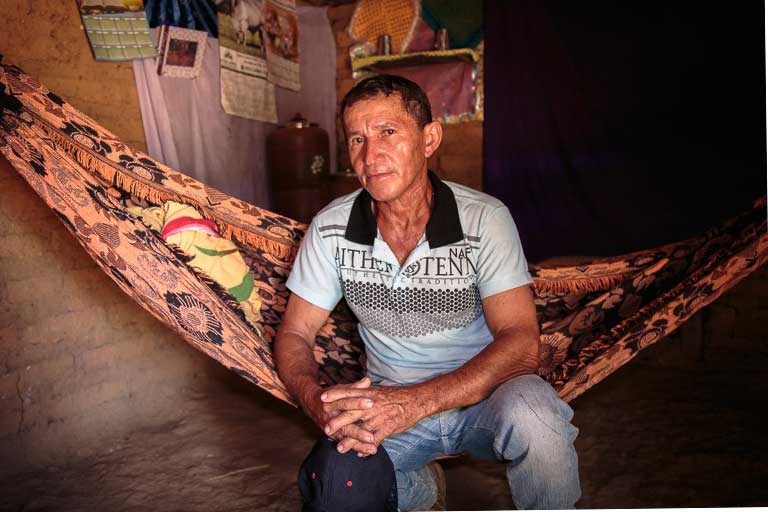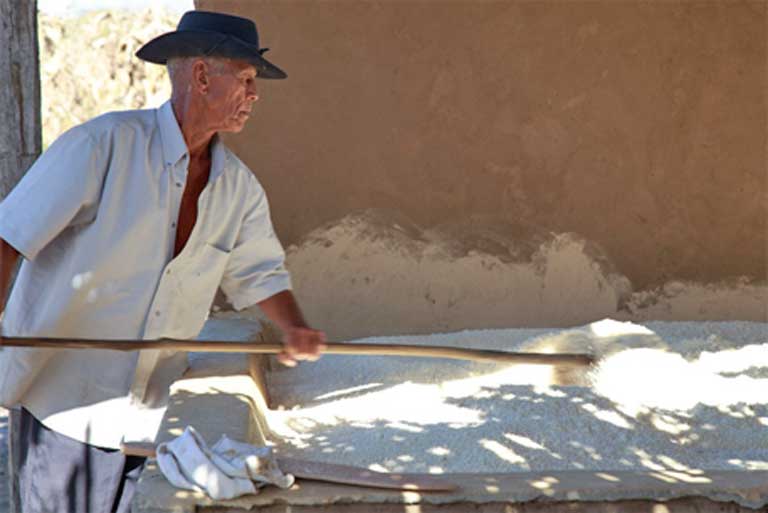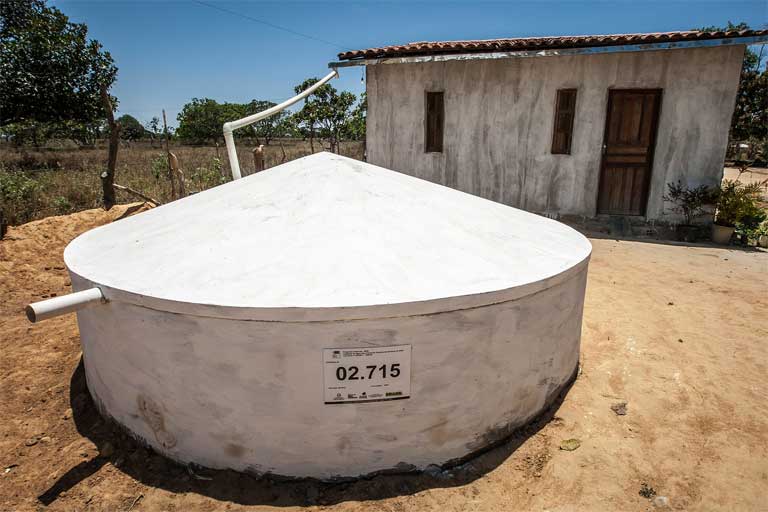- Since taking power in 2016, Michel Temer has drastically cut Brazil’s social programs, especially impacting poor rural families. These austerity measures also adversely affect the natural world, with one social program linked to sustainability eliminated, and with struggling rural families less likely to protect, and more likely to exploit, natural resources to meet minimal economic needs.
- In 2013, the Bolsa Familia benefit program benefited 14 million Brazilian families, with its success recognized internationally. In 2016, President Temer committed to reducing the number of people receiving Bolsa Família aid by 10 percent. By July 2017, 1.5 million fewer people received the benefit than in July 2014.
- Launched in 2011, the Bolsa Verde program’s goal was to give financial incentives to people in poverty who were behaving in an environmentally conscientious way. Traditional river-dwellers, indigenous populations, Quilombos (communities of runaway slave descendants) and other rural communities benefited. The Temer administration has zeroed out the program’s budget.
- Other social programs seeing draconian funding cuts are the Food Acquisition Program (PAA), a federal initiative that buys produce from small-scale family farmers and then offers it to public institutions such as schools and hospitals; and the National Cisterns Program, which brings cutting edge rainwater management and storage technologies to poor communities in need.

This is the second in a series by journalist Anna Sophie Gross who travelled to the Brazilian states of Tocantins and Maranhão in Legal Amazonia in May for Mongabay to assess the impacts of agribusiness on the region’s environment and people. A Portuguese version of this story can be read on Carta Capital.
CAMPOS LINDOS, Brazil – Seu Raimundo Miranda, age 61, is a small-scale farmer and honey producer who lives with his wife and three children in a small home he built himself on the outskirts of Campos Lindos city in Tocantins state. Until 2016, his wife received vital economic support from Brazil’s Bolsa Familia program. Then the benefit was suddenly cut, with no reason given for the loss.
His wife called the local aid bureau dozens of times, explaining how important the money was to the family, and pleading for the benefit to be reinstated. Each time, she was refused aid without explanation.
Raimundo, his wife and children used to live in the rural countryside where they grew crops and raised cattle, but were forced to move to the city after several family members became severely ill due to pesticide poisoning. The small land plot where Raimundo now grows food isn’t very productive, and people from the city regularly steal the crops he does grow.
“All of this is so painful for us,” he says. On many days the parents struggle to bring enough food to the table to feed their teenage children, one of whom has now taken a low paying job as a laborer, clearing land for a soy farmer. “I don’t like that he does that kind of work, and I know they don’t treat him well, but we need the money,” Raimundo explains.
The family is just one of many thousands in Brazil suffering deepening privation as, over recent years, the national government has used the nation’s extreme economic crisis as justification for the implementation of what critics call severe austerity measures.
Especially impactful have been sweeping funding cuts to institutions and programs hugely important to the health and wellbeing of poor rural communities in the Amazon and Cerrado regions, according to NGOs, academics and commentators who have drawn a compelling link between these drastic reductions and decreased quality of life in these areas.
“It’s a devastating [government] austerity program – bigger than any we’ve seen in Europe apart from Greece,” said David Stuckler, Professor of Policy Analysis at the University of Bocconi in Milan, Italy.
An examination of funding allocated to social programs over successive administrations – including those of presidents Luiz Inácio Lula de Silva (2003 – 2011), Dilma Rousseff (2011 – 2016), and Michel Temer (2016 – present) – shows a significant shift away from investment in programs which provided financial and social support to poorer rural communities.
These austerity measures not only impact the lives of people like Seu Raimundo Miranda. The budget reductions can also adversely affect the natural world, as social programs linked to sustainability are cut, and rural communities become less able to care for forests and other natural resources, and more likely to exploit those resources to meet minimal economic needs.

Bolsa Família program reductions
More than 50 million Brazilians were living in poverty as of 2016, with incomes of R$387 ($100) per month, according to IBGE, the federal Institute of Geography and Economics. The Bolsa Família program (PBF), launched in 2003, aims at abolishing poverty and hunger by providing income directly to poor and extremely poor families. It especially tackles the issue of male financial dominance, with ninety-three percent of beneficiaries being women.
In 2013, Bolsa Familia benefited around 14 million families – equating to a quarter of the nation’s population, and the program is recognized internationally as one of the world’s largest, and most successful of its kind.
In 2016, President Temer committed to reducing the number of people receiving Bolsa Família by 10 percent. Officials from the Ministry of Social Development used the rhetoric of “fighting fraud” to defend this quota reduction, claiming they were tightening up the system to ensure that beneficiaries truly meet “low income” criteria.
“What the federal government has always advocated was the imperative need for the correct application of public resources,” said a government spokesperson. “When the current management took over, it implemented the largest fine tooth-comb [to eliminate families from] the program in its history and found there were 1.1 million benefits being paid incorrectly.”
As a result, 2016 and 2017 saw major reductions in families receiving support. In July of last year, the number fell by 544,000, the largest monthly reduction since Bolsa Família began fifteen years ago; 1.5 million fewer people received the benefit in July 2017 than in July 2014.
However, Temer’s promise of a 10 percent reduction did not materialize. Though 2016 saw a quite drastic fall in beneficiaries, the number climbed back up in 2017. It remains to be seen whether the government will pursue further cuts, as it seeks out families fraudulently claiming the benefit.

The demise of Bolsa Verde
Silvia Pinto dos Santos is a fisherwoman and mother of three who lives in the state of Bahia, where she practices and teaches sustainable fishing methods, while also clearing local rivers of plastics and other waste. From 2012 to 2017, Silvia received R$300 ($80) every 3 months from the government for her important conservation work. Last October, the benefit was cut off suddenly, and she was told it will never return.
Launched in 2011 by Dilma Rousseff’s government as part of her “Brazil free from Absolute Poverty” program, Bolsa Verde’s main objective was to give financial incentives to people in poverty who were behaving in an environmentally conscientious way.
A credit package was given every three months to those preserving natural resources in forests, reserves and rural settlements. Traditional river-dwellers, indigenous populations, Quilombos (communities of runaway slave descendants) and other rural communities were included in the program.
“Bolsa Verde helped me a lot. I’m a mother, living alone with three children. I was able to buy food at the supermarket and school materials for the children,” Santos says. “It was a relief knowing it was there and I would be able to cover basic costs for my kids, even when I didn’t come home with enough fish one week.”
This innovative initiative allied the aims of conservation, sustainable protection of biodiversity, and the eradication of extreme poverty in Brazil. The aid reached families in some of the most remote regions of Brazil.
In 2015 under Rousseff, the program’s budget was trimmed. In 2016 under Temer, reductions became more severe. Then in 2018, Bolsa Verde was eliminated from the Draft Budget altogether, bringing an end to the program, and causing 50,000 families significant income loss.
“Since it was cut, my life has been really difficult,” says Santos. “I’m all alone here with my three children; it was a lifeline for us.”
This year, the Ministry of the Environment has sought new funding sources for the program, recently submitting a proposal to the Amazon Fund.
Evaluations carried out, and data obtained, from the Bolsa Verde Program in 2015 revealed that 88 percent of beneficiaries were women, with generally low levels of education and little access to quality water, basic sanitation and infrastructure. As a group, the beneficiaries became known as “Forest Guardians” and, according to the Ministry of the Environment, protected 288,000 square kilometers (111,000 square miles), an area roughly equal in size to Italy. Ninety-four percent of this territory was inside the Amazon biome.
A ministry employee, speaking under condition of anonymity, explained that the program was cut because it was seen as a “welfare initiative,” characteristic of the previous government. “It was much more of a political move than anything technical or budgetary,” the official said. It also seems likely that the loss of paid Forest Guardians could benefit land grabbers looking to profit from illegal land theft and deforestation.

Food Acquisition program suffers deep cuts
Antonio Jose Alexandre Viera, 54, lives in Formosa, a small settlement in Tocantins state. He used to sell cassava, rice, beans, corn, lettuce, potatoes and pumpkins to the government as part of its Food Acquisition Program (PAA). This federal initiative buys produce at regional market prices from small-scale family farmers and then offers it to public institutions, such as schools, restaurants, hospitals, and the armed forces, as well as using it as food supplements for people in poverty.
Viera says the scheme used to bring in a good amount of money, even after a dam was built nearby, flooding the fields where they produced most of their crops. But then three years ago, PAA was cut off for the entire community. Locals were told it would be reinstated soon, but those promises haven’t been met.
The United Nations Food and Agriculture Organization (FAO) held up the PAA to the global community as a successful example of a program that promotes family farming while reducing food and nutritional insecurity, with the UN sharing PAA’s structural details with other socially vulnerable countries in Latin America and Africa.
However, the program has seen precipitous budget cuts, falling from R$840 million (US$225 million) in 2012, to R$360 million (US$96 million) annually in 2017.

National Cisterns Program dries up
The Cisterns Program, introduced during the Lula administration, and seen as a great innovation, brings cutting edge rainwater management and storage technologies to communities in Brazil’s driest and poorest regions. The Brazilian Semi-Arid Association (ASA), a network of more than three thousand civil society entities, played an invaluable role in developing and implementing the policy.
Since 2003, more than 1.3 million cisterns have been installed, offering drinking water and agricultural production water throughout the dry season. The Program won the Future Policy Silver Award in 2017, presented by the World Future Council and the United Nations Convention to Combat Desertification (UNCCD), in recognition of its empowerment of rural women and for its promotion of sustainable rural development of populations in extreme poverty.
However, since 2015, the program has seen deep budget reductions, falling from R$377 million (US$100 million) in 2013, to R$46 million (US$12 million) in 2017.
The Ministry for Social Development argues that its decision to reduce investment in the program is a result of its unanticipated success. “The Ministry and its partners were able to deliver more than 1.3 million cisterns, a target higher than the federal government’s prediction in 2014, which was 1 million by 2017,” a spokesperson said. “Thus, resources allocated to the program were revised and new guidelines were established.”
However, according to ASA, the budget cuts have resulted in more than 350,000 families not receiving needed drinking water technologies, while more than 600,000 families will not receive water technologies for agricultural production. And perhaps, the scaling back of the program couldn’t come at a worse time for the poor, with the country being hit increasingly by intensifying drought, and scientists warning that climate change could bring even deeper droughts.

Socio-economic impact of budget cuts
Marcelo Neri, professor at the Getulio Vagas Foundation and previously president of the Institute of Applied Economic Research (IPEA), sees the drastic reductions in social programs in a historical context. He notes that between 1991 and 2015, a huge amount was invested in improving the human condition by successive governments. Now, he says, the tide of political will has turned. “The [wealthy] elite in Brazil got tired of seeing inequality falling,” he said. “There’s also a deep dissatisfaction to do with government spending because of huge corruption scandals.”
Still, he warns against blanket condemnation of all budget cuts, noting that Brazil’s economy is currently in a very precarious situation; he asserts that some cuts do need to be made. It’s the choices as to where those reductions should fall that concerns him: “These choices are certainly not pro-poor,” he concluded.
The time in which Brazilian social programs were heralded as global reference points by the UN for other nations to emulate appears to be over, at least for now. Instead, experts are pointing to severe program cuts as being causally related to intensifications in poverty, unemployment and inequality in Brazil’s rural communities.
Last year, extreme poverty rose for the third consecutive year by 11 percent, engulfing 14.8 million Brazilians, while infant mortality increased for the first time in 20 years. Meanwhile, the concentration of wealth grew in the country’s North, Northeast, South and Center-West.
The slashing of the social program safety net (leaving people deep in poverty without economic options), coupled with rapid industrial agricultural expansion in the Cerrado and Amazon (providing few new farm jobs and often forcing an exodus to urban slums), have combined to reduce quality of life and to fragment rural cultural identities.
“There are clear signs of social deterioration, but I don’t see that the debate in Brazil is very worried about it,” said Neri.
Mongabay contributor Anna Sophie Gross was accompanied on her trip by Thomas Bauer, a photographer and filmmaker who has been documenting and supporting communities in the Cerrado and Amazon for over 20 years. He produced nearly all of the photos and videos for this series.
FEEDBACK: Use this form to send a message to the author of this post. If you want to post a public comment, you can do that at the bottom of the page.

